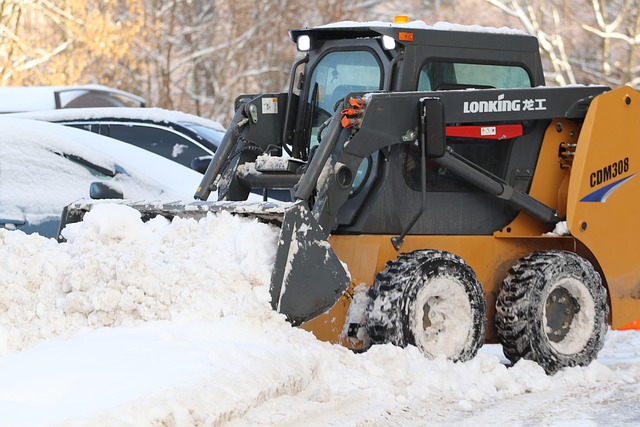What To Know About Bank Repossessed Construction Vehicles - A Complete Guide
Bank repossessed construction vehicles represent a significant segment of the used equipment market, offering potential buyers access to heavy machinery at reduced prices. These vehicles become available when borrowers default on their loans, prompting financial institutions to reclaim and sell the equipment to recover their losses. Understanding the process, benefits, and potential challenges of purchasing repossessed construction vehicles can help buyers make informed decisions when seeking cost-effective equipment solutions.

What are Bank Repossessed Construction Vehicles
Bank repossessed construction vehicles are heavy equipment and machinery that financial institutions have reclaimed from borrowers who failed to meet their loan obligations. When construction companies or individual contractors cannot maintain their payment schedules, banks exercise their legal right to seize the collateral used to secure the original loan. These vehicles encompass a wide range of equipment including excavators, bulldozers, dump trucks, cranes, backhoes, and specialized construction machinery.
The repossession process typically occurs after several missed payments and unsuccessful attempts by the lender to work out alternative payment arrangements with the borrower. Once repossessed, banks aim to sell these vehicles quickly to minimize storage costs and recover as much of the outstanding debt as possible. This urgency often translates to competitive pricing for potential buyers.
Key Features of Bank Repossessed Construction Vehicles
Bank repossessed construction vehicles often retain many of their original specifications and capabilities, though their condition can vary significantly depending on usage history and maintenance practices of the previous owner. Most repossessed equipment includes standard features such as hydraulic systems, operator cabins, and specialized attachments relevant to their intended construction applications.
These vehicles typically come with existing documentation including maintenance records, when available, and clear titles once the sale is completed. However, buyers should note that warranty coverage from the original manufacturer may have expired, and any existing service contracts likely do not transfer to new owners. The equipment may show normal wear and tear consistent with commercial construction use, and some units might require immediate maintenance or repairs to achieve optimal performance.
Bank Repossessed Construction Vehicles Pros and Cons
Purchasing bank repossessed construction vehicles offers several advantages, primarily centered around cost savings. Buyers can often acquire equipment at prices significantly below market value for comparable used vehicles. Banks prioritize quick sales over maximum profit, creating opportunities for substantial savings. Additionally, the selection frequently includes relatively recent models that retain modern features and capabilities.
However, potential drawbacks require careful consideration. Repossessed vehicles are typically sold in as-is condition, meaning buyers assume responsibility for any repairs or maintenance issues. Limited or no warranty protection leaves purchasers vulnerable to unexpected repair costs. The previous owner’s maintenance practices remain unknown, potentially affecting the equipment’s reliability and longevity. Furthermore, inspection opportunities may be limited, and financing options might be more restrictive compared to traditional used equipment purchases.
How to Get Bank Repossessed Construction Vehicles
Acquiring bank repossessed construction vehicles involves several potential channels. Direct contact with local banks and credit unions represents one approach, as these institutions occasionally sell repossessed equipment directly to the public. Many financial institutions also partner with auction houses and equipment dealers to handle the sale process on their behalf.
Professional equipment auctions, both in-person and online, frequently feature repossessed construction vehicles from multiple lenders. These events allow buyers to inspect equipment beforehand and participate in competitive bidding processes. Specialized dealers who focus on repossessed and surplus equipment maintain ongoing relationships with financial institutions and can provide access to newly available inventory. Government surplus auctions also occasionally include repossessed vehicles from failed construction contractors.
| Acquisition Method | Provider Examples | Key Features | Cost Range |
|---|---|---|---|
| Direct Bank Sales | Wells Fargo Equipment Finance, Bank of America | Direct negotiation, limited selection | 60-80% of market value |
| Auction Houses | Ritchie Bros, IronPlanet | Large selection, competitive bidding | 50-75% of market value |
| Equipment Dealers | MachineryTrader, Equipment World | Professional inspection, financing options | 65-85% of market value |
| Government Auctions | GSA Auctions, GovDeals | Variety of equipment, transparent process | 40-70% of market value |
Prices, rates, or cost estimates mentioned in this article are based on the latest available information but may change over time. Independent research is advised before making financial decisions.
Successful acquisition requires preparation including securing financing, if needed, before beginning the search process. Buyers should establish maximum bid limits based on their budget and the equipment’s intended use. Professional mechanical inspections, when permitted, can help identify potential issues and inform purchasing decisions. Understanding the total cost of ownership, including transportation, immediate repairs, and ongoing maintenance, ensures realistic budgeting for the purchase.
Bank repossessed construction vehicles can provide cost-effective solutions for construction professionals and contractors seeking to expand their equipment fleet without the premium costs associated with new purchases. While these opportunities require careful evaluation and carry inherent risks, informed buyers who conduct thorough research and maintain realistic expectations can find valuable equipment that serves their operational needs effectively. Success in this market depends on patience, preparation, and willingness to accept the as-is nature of most repossessed equipment sales.




